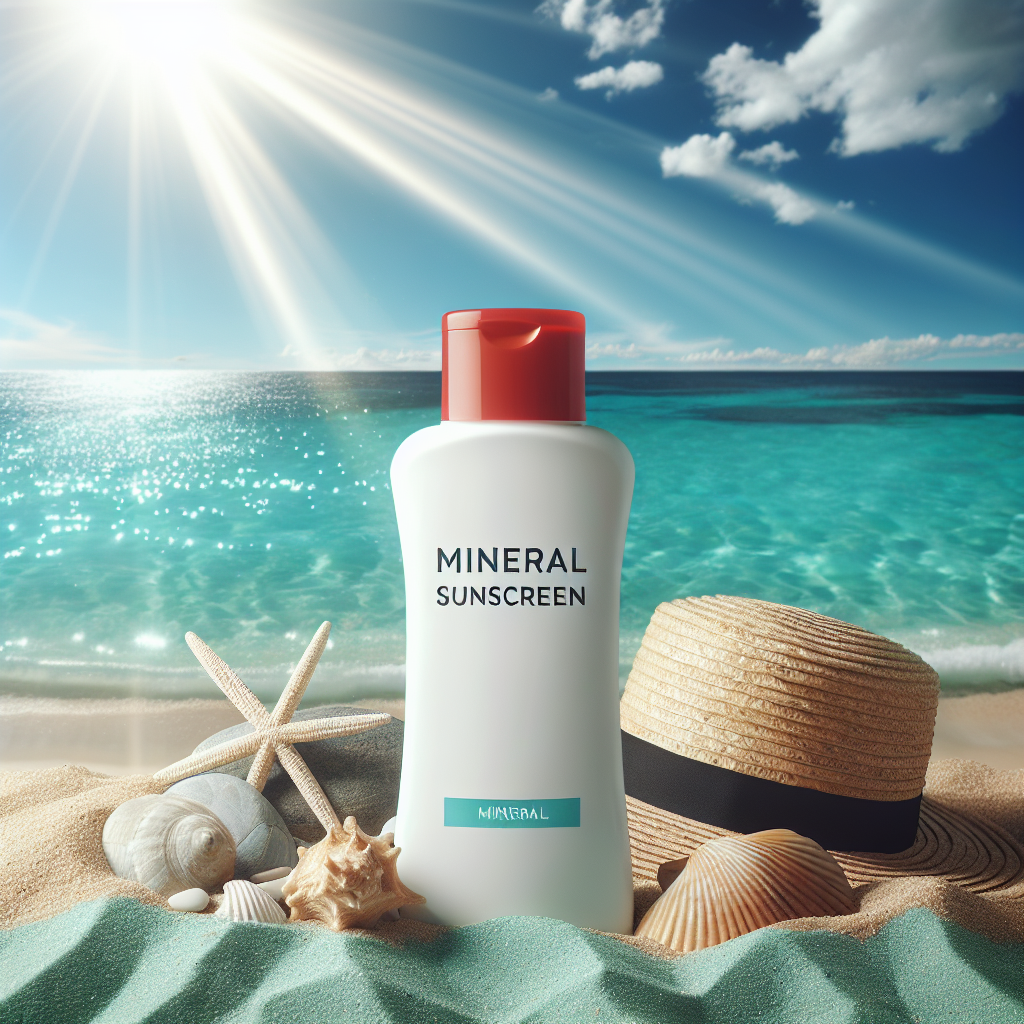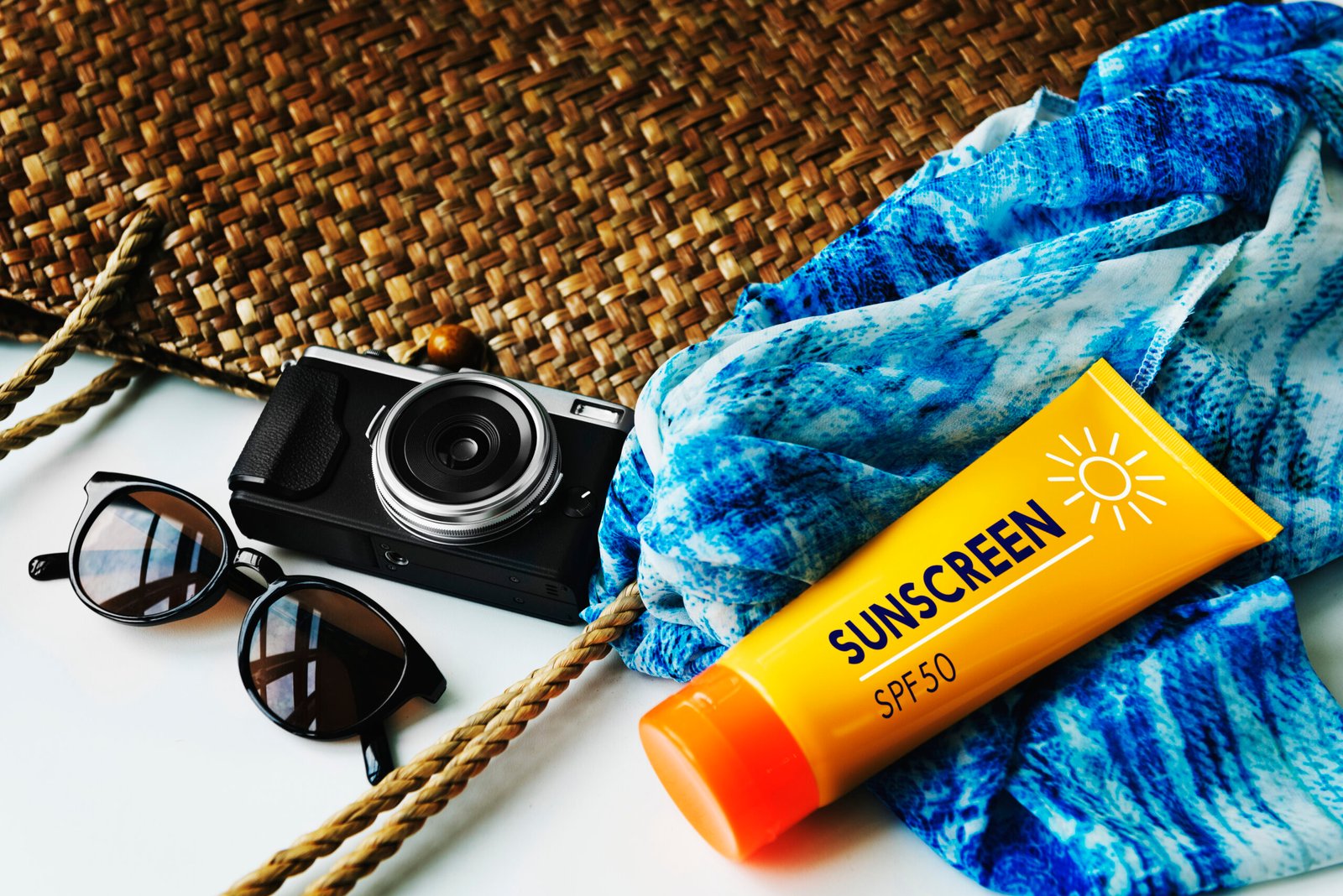Introduction to Mineral Sunscreen
Mineral sunscreen, often referred to as physical sunscreen, is a type of sunblock that uses natural minerals like zinc oxide and titanium dioxide to protect the skin from harmful ultraviolet (UV) rays. Unlike chemical sunscreens that absorb UV rays, mineral sunscreen sits on the surface of the skin and reflects them away.
As more people become conscious of their skin’s health and the environment, mineral sun-screen has gained widespread popularity. It’s not just a product that shields you from the sun; it’s a holistic skin-care option that aligns with eco-conscious practices and offers protection without harmful chemicals. But what makes it different from other types of sunscreens? In this article, we’ll dive deep into everything you need to know about mineral sunscreen, including its composition, benefits, and why it might be the best option for you.
What is Mineral Sunscreen?
Mineral sunscreen, also referred to as physical sunscreen, uses natural minerals such as zinc oxide and titanium dioxide as its active ingredients. Unlike chemical sunscreens, which absorb UV rays, sunscreen works by sitting on top of the skin and reflecting the sun’s rays, acting as a physical barrier. Because of its natural ingredients, it’s often favored by people with sensitive skin, pregnant women, and those looking for environmentally-friendly alternatives.
The two key minerals in these sunscreens, zinc oxide and titanium dioxide, are broad-spectrum, meaning they provide protection against both UVA and UVB rays. UVA rays are responsible for aging, while UVB rays cause sunburns. Ensuring protection from both is critical for maintaining skin health.

How It Differs from Chemical Sunscreens
While chemical sunscreens absorb into the skin and transform UV rays into heat, mineral sunscreens create a physical barrier that blocks both UVA and UVB rays. This fundamental difference makes mineral sunscreen a popular choice among health-conscious consumers, skincare enthusiasts, and outdoor adventurers.
The Science Behind Mineral Sunscreen
Ingredients
Mineral sunscreens primarily use two active ingredients:
- Zinc Oxide: Known for its broad-spectrum protection, zinc oxide is effective against both UVA and UVB rays.
- Titanium Dioxide: This mineral is more effective at blocking UVB rays and is often used in combination with zinc oxide for comprehensive sun protection.
How They Protect the Skin from UV Rays
When applied, these mineral particles sit on top of the skin and scatter, reflect, and absorb UV rays. This mechanism ensures immediate protection upon application, unlike chemical sunscreens that need time to absorb into the skin.
The Benefits of Choosing Mineral Sunscreen
1. Broad-Spectrum Protection
Sunscreen offers comprehensive protection against both UVA and UVB rays. This broad-spectrum defense helps reduce the risk of sunburn, skin aging, and even skin cancer.
2. Suitable for Sensitive Skin
The formula in mineral sun-screen is typically free from harmful chemicals like oxybenzone and octinoxate, making it ideal for people with sensitive skin. Zinc oxide, in particular, has anti-inflammatory properties, making it suitable for those with conditions like eczema or rosacea.
3. Environmentally Friendly
Unlike chemical sunscreens, many of which contain ingredients that are harmful to coral reefs, mineral sunscreens are often labeled as reef-safe. This makes them a more eco-conscious option for those who want to protect both their skin and the environment.
4. Immediate Protection
One significant advantage of mineral sunscreen is that it starts working the moment you apply it. There’s no need to wait 20-30 minutes for absorption, as with chemical sunscreens.
5. Less Likely to Cause Allergic Reactions
Mineral sun-screen is typically free from synthetic fragrances, parabens, and phthalates, all of which can irritate sensitive skin. This makes it a great option for those who have allergies or sensitivities to certain skincare ingredients.
6. Better Tolerated by Babies and Pregnant Women
Because mineral sunscreen doesn’t contain potentially harmful chemicals, it’s often recommended by dermatologists for babies and pregnant women. Its gentle formula makes it safe for use on even the most delicate skin.
7. Doesn’t Penetrate the Skin
Unlike chemical sunscreens, which can be absorbed into the bloodstream, mineral sunscreen remains on the surface of the skin. Studies have raised concerns about the absorption of chemical sunscreens and their potential hormonal effects. By opting for a physical barrier, you avoid this risk altogether.
How to Use Mineral Sunscreen Effectively
Application Tips
- Apply Generously: Use about a teaspoon of mineral sunscreen for your face and a shot glass worth for your body.
- Even Coverage: Ensure you cover all exposed areas, including the back of your neck, ears, and the tops of your feet.
- Pat, Don’t Rub: Patting helps the sunscreen form an even layer, optimizing its protective barrier.

How to Apply Mineral Sunscreen
To get the best protection from mineral sunscreen, it’s essential to apply it properly. Here are some tips to ensure you’re fully protected:
- Use Enough Product: A common mistake is not applying enough sunscreen. Dermatologists recommend using about one ounce (a shot glass full) of sunscreen to cover the body.
- Apply to All Exposed Areas: Don’t forget areas like the back of your neck, ears, and the tops of your feet.
- Reapply Regularly: Even though mineral sunscreen starts working immediately, it still needs to be reapplied every two hours and more often if you’re swimming or sweating.
- Avoid Rubbing it In: Instead of rubbing sunscreen into your skin until it disappears, gently pat it on so that it can form an even barrier.
Reapplication Guidelines
Reapply every two hours, especially after swimming, sweating, or towel drying. Although mineral sunscreens are water-resistant, reapplication is key to maintaining effective UV protection.
Addressing Common Myths and Misconceptions
Does Mineral Sunscreen Leave a White Cast?
A common concern is the white cast left by mineral sunscreens. While older formulations were notorious for this, modern advancements have led to micronized particles and tinted formulas that blend seamlessly into the skin.
Is It Less Effective Than Chemical Sunscreens?
Contrary to popular belief, mineral screens are equally effective. Dr. Mark Johnson, a leading dermatologist, confirms, “Both mineral and chemical sunscreens, when used correctly, provide adequate protection. The choice depends on personal preference and skin type.”
Choosing the Right Mineral Sunscreen for You
Factors to Consider
- SPF Level: Choose an SPF of at least 30 for daily use.
- Skin Type: For oily skin, opt for a matte finish. Dry skin benefits from hydrating formulations.
- Activities: Water-resistant options are ideal for swimming or heavy sweating.
Mineral vs. Chemical Sunscreen: Which is Better?
Both mineral and chemical sunscreens offer UV protection, but they differ in how they work and who they are best suited for.
- Chemical sunscreens absorb into the skin and convert UV rays into heat, which is then released from the skin. These formulas tend to be lighter and more cosmetically elegant but may contain ingredients like oxybenzone, which have been linked to skin irritation and environmental harm.
- Mineral sunscreen, on the other hand, reflects UV rays away from the skin. It’s a better option for people with sensitive skin or those who are concerned about the environmental impact of their sunscreen. However, it may feel heavier on the skin and could leave a white cast if not properly formulated.
In short, if you have sensitive skin or are looking for a more natural, environmentally-friendly option, mineral sunscreen is probably the best choice. On the other hand, if you want a lighter feel or plan on being highly active, a chemical sunscreen might be better suited to your needs.
The Future of Mineral Sunscreen
Innovations in Mineral Sunscreen Technology
The future of sunscreen is bright, with ongoing research focusing on enhancing formulation aesthetics and efficacy. Dr. Emily White, a cosmetic scientist, notes, “Innovations are geared towards creating non-nano particles that ensure safety without sacrificing effectiveness or appearance.”
Growing Popularity and Consumer Awareness
With increasing awareness about the environmental impact of chemical sunscreens and the health benefits of natural ingredients, more consumers are turning to mineral sunscreens. This shift is driving brands to invest in research and development, ensuring better products for the market.
Conclusion
Mineral sun-screen stands out as a superior choice for broad-spectrum UV protection, especially for those with sensitive skin and eco-conscious mindsets. Its immediate effectiveness, safety for coral reefs, and long-lasting protection make it a staple in modern skincare routines.
By choosing mineral sunscreen, you’re not only safeguarding your skin but also contributing to environmental conservation.

